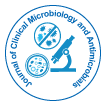

Opinion Article - (2023)Volume 7, Issue 4
The human body is an intricate ecosystem teeming with microorganisms that play essential roles in various aspects of our health. Among these microorganisms, adolescentis bacteria, particularly strains within the Ruminococcus gnavus group, have emerged as intriguing players in the complex landscape of metabolic disorders.
Adolescentis bacteria
Adolescentis bacteria, also known as Ruminococcus gnavus, belong to a group of microorganisms residing within the human gut microbiome. These bacteria earned their name due to their prevalence during adolescence when the gut microbiota undergoes dynamic changes.
Metabolic disorders
Metabolic disorders encompass a broad spectrum of health conditions characterized by abnormal metabolic processes. These disorders can manifest as obesity, type 2 diabetes, metabolic syndrome, and cardiovascular diseases. With their rising global prevalence, metabolic disorders have become a significant public health concern.
Gut microbiome's crucial role
The gut microbiome, a complex community of microorganisms residing in our digestive tract, has garnered immense attention in recent years for its influence on human health. It plays a pivotal role in nutrient metabolism, immune regulation, and even mood regulation. As such, researchers have sought to unravel the intricate connections between the gut microbiome and metabolic disorders.
Adolescentis bacteria and metabolic health
The relationship between adolescentis bacteria and metabolic disorders is multifaceted:
Obesity: Emerging evidence suggests that an abundance of adolescentis bacteria may be associated with obesity. An altered gut microbiome composition, characterized by an overgrowth of certain bacteria, including adolescentis strains, can lead to increased energy extraction from food, contributing to weight gain.
Inflammation: Adolescentis bacteria have been linked to gut inflammation, which can trigger or exacerbate metabolic disorders. Inflammation disrupts insulin signaling, a key factor in the development of insulin resistance, a characteristic feature of type 2 diabetes.
Short-Chain Fatty Acids (SCFAs): Adolescentis bacteria play a role in fermenting dietary fibers, producing Short-Chain Fatty Acids (SCFAs) as byproducts. SCFAs have been shown to influence metabolic processes and may have both positive and negative effects on metabolic health.
Dietary influence: It profoundly affects the gut microbiome composition, including the prevalence of adolescentis bacteria. High-fiber diets can promote the growth of beneficial gut bacteria while potentially suppressing the overgrowth of certain pathogenic species.
Implications for metabolic disorder management
Personalized approaches: Tailoring dietary and therapeutic interventions based on an individual's gut microbiome composition, including the prevalence of adolescentis bacteria, may lead to more effective strategies for managing metabolic disorders.
Probiotics and prebiotics: Probiotics containing beneficial strains and prebiotics that support the growth of beneficial bacteria, including adolescentis strains, may offer potential therapeutic avenues.
Dietary recommendations: Promoting diets rich in dietary fiber, fruits, vegetables, and whole grains can encourage a healthy gut microbiome balance, potentially mitigating metabolic disorders.
Early detection: Monitoring changes in the gut microbiome, including fluctuations in adolescentis bacteria populations, may serve as an early indicator of metabolic disorder risk, allowing for timely intervention.
Challenges
While the connection between adolescentis bacteria and metabolic disorders is captivating, several challenges remain:
Causality: Determining whether alterations in adolescentis bacteria directly contribute to metabolic disorders or are merely associated with these conditions is a complex task.
Microbial variability: The gut microbiome is highly individualized, and the effects of adolescentis bacteria on metabolic health may vary from person to person.
Therapeutic development: Developing effective interventions based on adolescentis bacteria requires a deeper understanding of their specific mechanisms and interactions within the gut microbiome.
As the global burden of metabolic disorders continues to rise, exploring the role of adolescentis bacteria within the gut microbiome has become an urgent scientific endeavor. While much remains to be uncovered, the potential for targeted interventions and personalized approaches to managing these complex conditions offers a ray of hope for improved health outcomes. The microscopic world of adolescentis bacteria may hold vital keys to unlocking the mysteries of metabolic disorders and ultimately improving the lives of millions affected by these challenging health conditions.
Citation: Ahmad F (2023) The Role of Adolescentis Bacteria in Metabolic Disorders. J Clin Microbiol Antimicrob. 7:170.
Received: 03-Nov-2023, Manuscript No. JCMA-23-27202; Editor assigned: 06-Nov-2023, Pre QC No. JCMA-23-27202 (PQ); Reviewed: 21-Nov-2023, QC No. JCMA-23-27202; Revised: 28-Nov-2023, Manuscript No. JCMA-23-27202 (R); Published: 05-Dec-2023 , DOI: 10.35248/jcma.23.7.170
Copyright: © 2023 Ahmad F. This is an open-access article distributed under the terms of the Creative Commons Attribution License, which permits unrestricted use, distribution, and reproduction in any medium, provided the original author and source are credited.